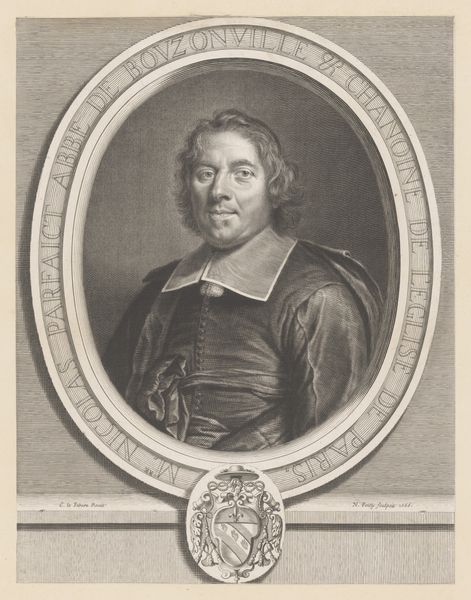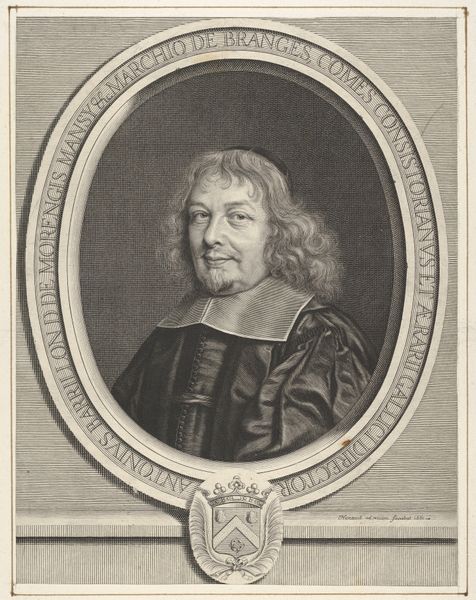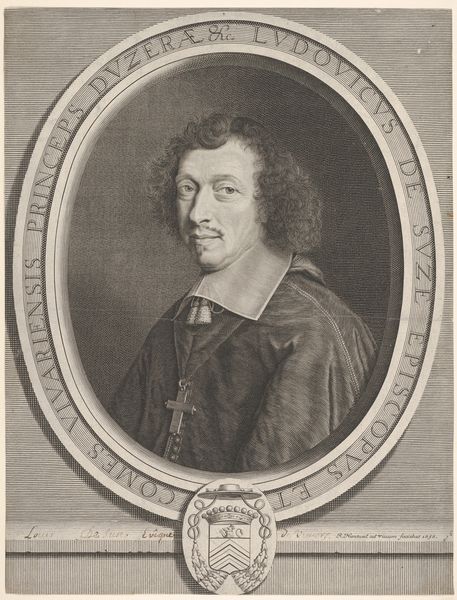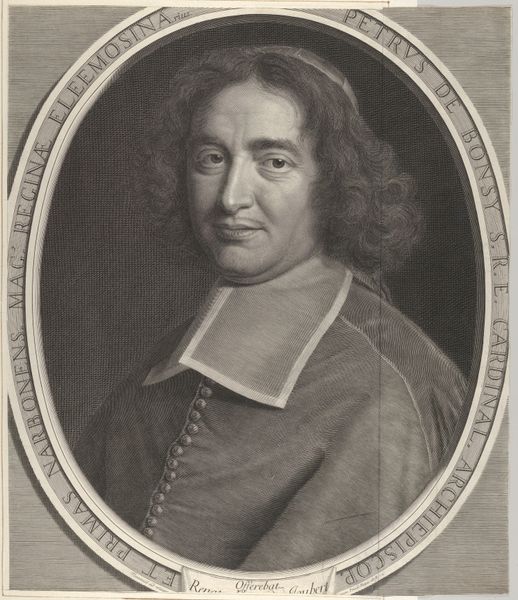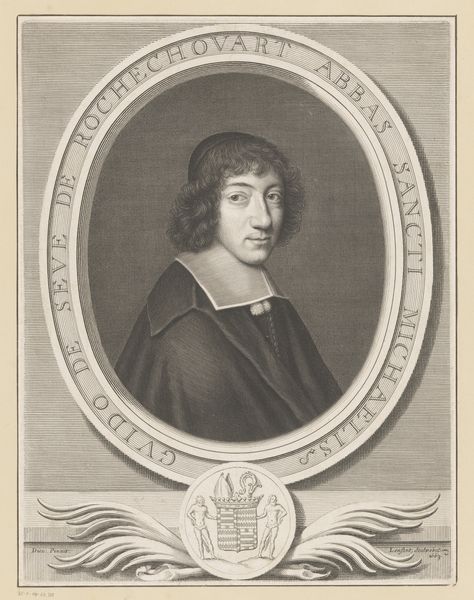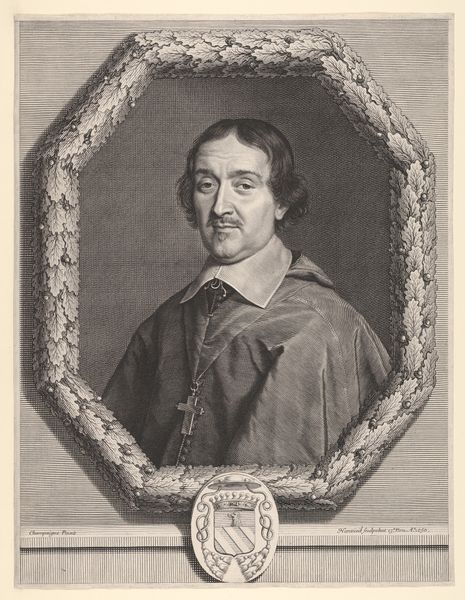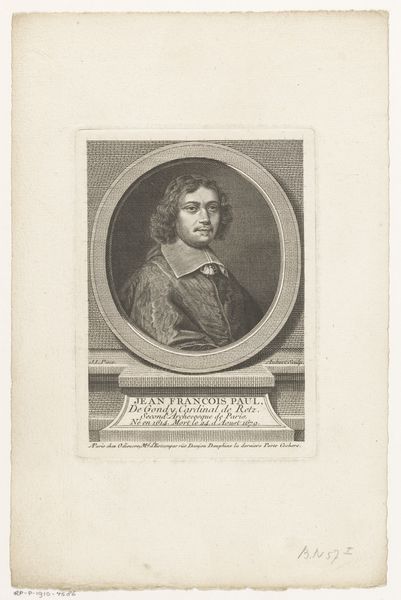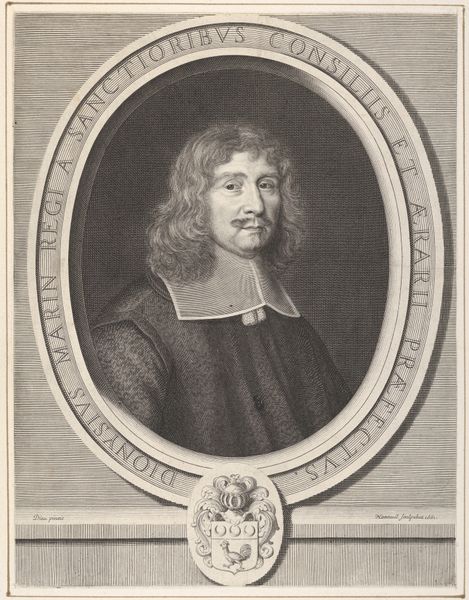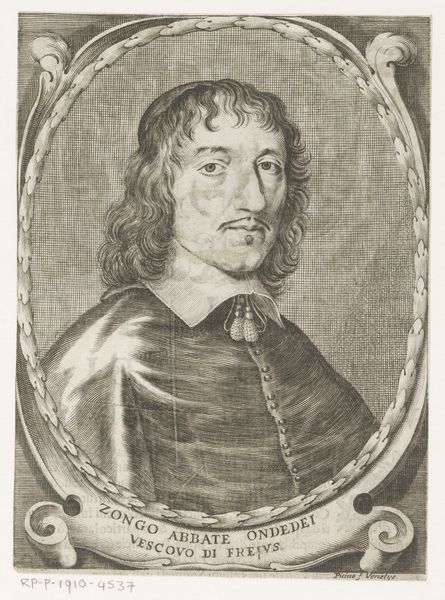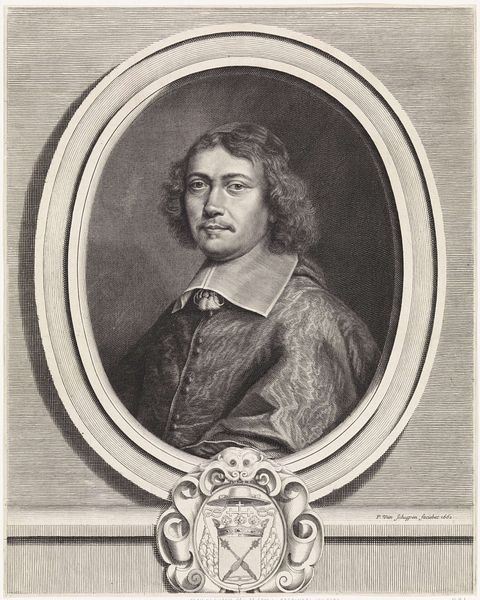
print, engraving
#
portrait
#
baroque
# print
#
old engraving style
#
figuration
#
engraving
Dimensions: height 325 mm, width 255 mm
Copyright: Rijks Museum: Open Domain
Curator: This is a print from 1650, titled "Portret van Pierre de Bertier," created by Gilles Rousselet. It's an engraving and a striking example of Baroque portraiture held here at the Rijksmuseum. Editor: Immediately, I’m struck by the intensity of his gaze, even across centuries. The detail is astonishing for an engraving – the textures of his clothing and the intricate shadows. There’s a contemplative, almost melancholic air to him. Curator: The very act of commissioning a portrait, then as now, was a marker of social standing, even more so rendered with such ornate style during the height of the Baroque. Rousselet's subject becomes part of a visual discourse surrounding power and status, complicated, in this case, by Pierre de Bertier’s evident religious status marked by the garments, thus demanding an intersectional consideration of class, religion and its privileges in the era. Editor: Indeed. Note the prominence of the cross, subtly displayed but undeniably present. Its weight, visually and symbolically, speaks volumes. The oval frame itself is a symbol of protection and eternity, framing him not just physically but also within a concept of enduring memory. Curator: How do you think the religious implications play within the context of Baroque visual rhetoric? What tensions emerge, for you? Editor: The formality and restraint – consider the color palette of grey tones of this print only - suggest a negotiation of power. The Baroque aesthetic often employed drama and opulence. Yet, the print limits its ornamentation which I believe underscores an interesting negotiation between humility, spirituality, and the unavoidable demonstration of status through art. He appears as if posed for the court even though the symbol and look seem humble at the same time. Curator: I’m compelled by the intersectional dynamics at work. Is there space to think through how art creation contributes to canon-building and who benefits from cultural depictions like these? Editor: Undoubtedly. It invites consideration of who is remembered, whose image endures, and the narratives these images perpetuate or even seek to obscure. His slightly turned head, almost looking back at us, evokes curiosity regarding what historical circumstances molded this man’s gaze. It leads to an important insight about how the past engages with our present concerns through material visual remains like this engraving. Curator: What critical reflection regarding canon is key when facing representations of power during these specific historical moments, as they shape societal consciousness even today. Editor: Yes, it compels us to actively and critically examine whose stories were promoted, whose faces became synonymous with posterity and by consequence which other gazes were omitted.
Comments
No comments
Be the first to comment and join the conversation on the ultimate creative platform.
